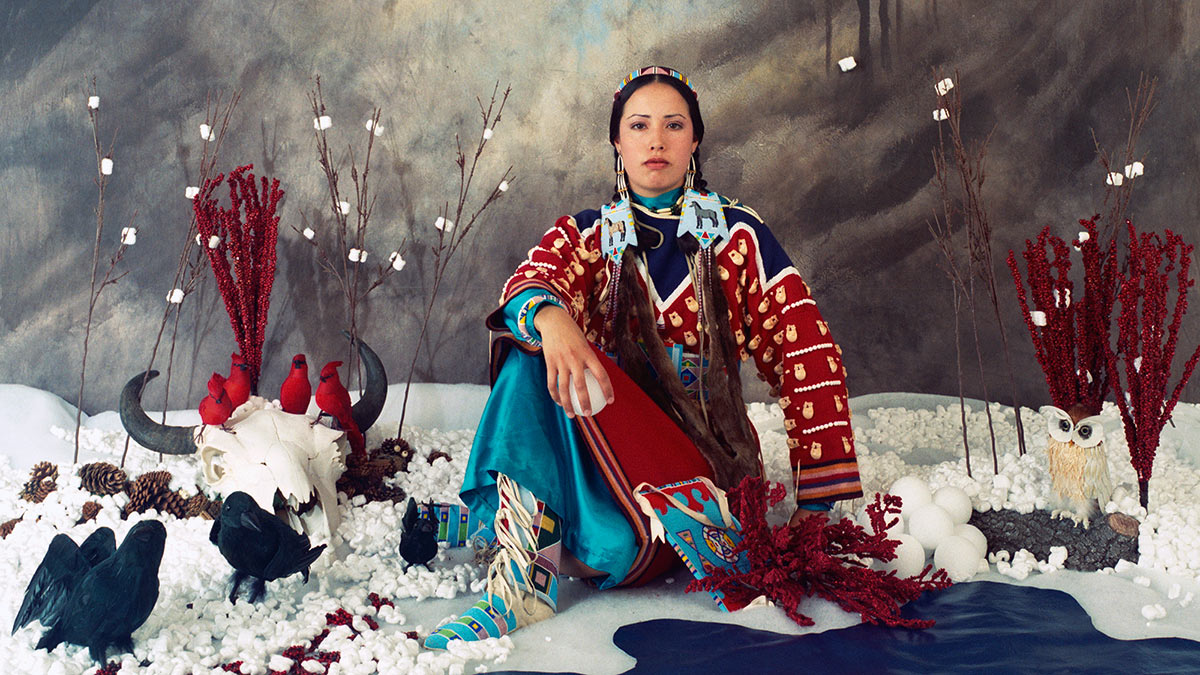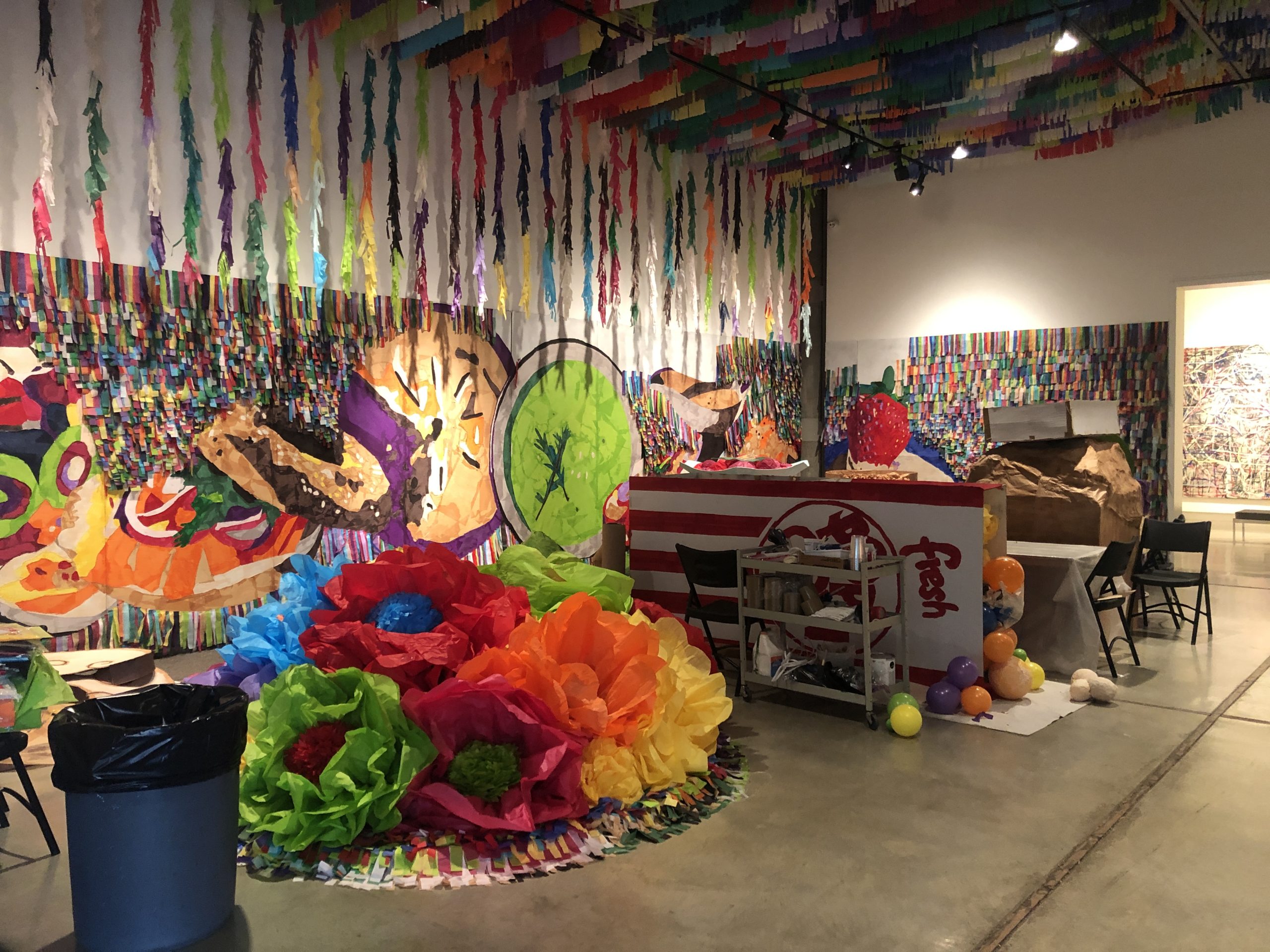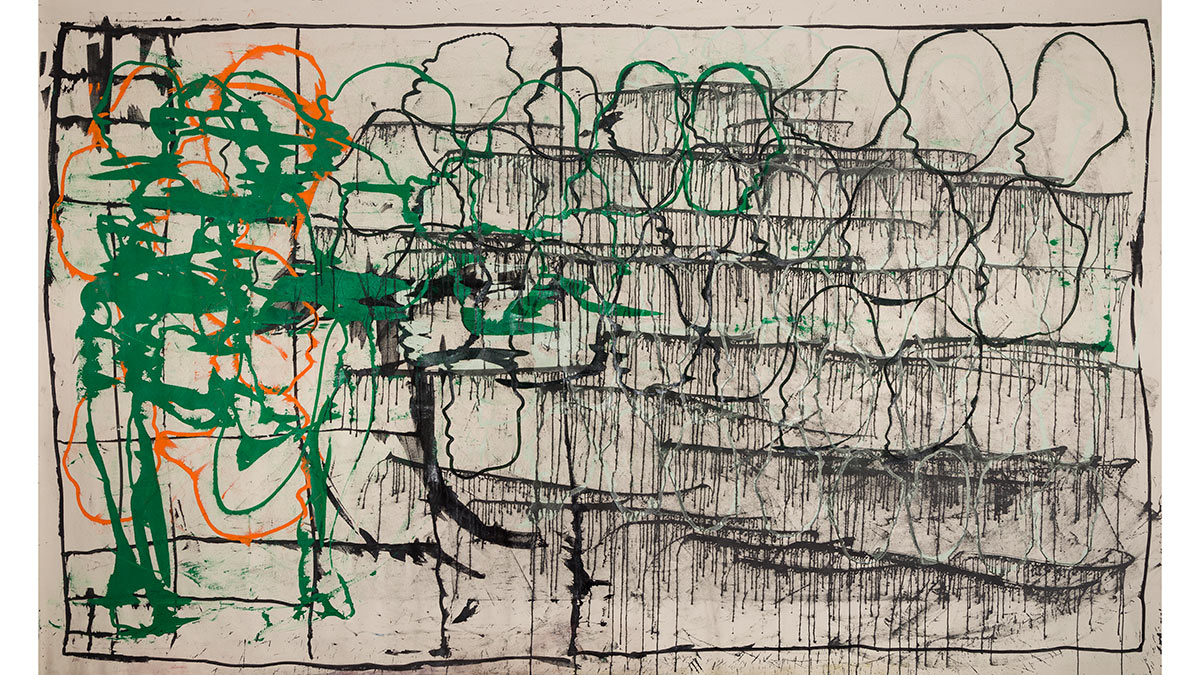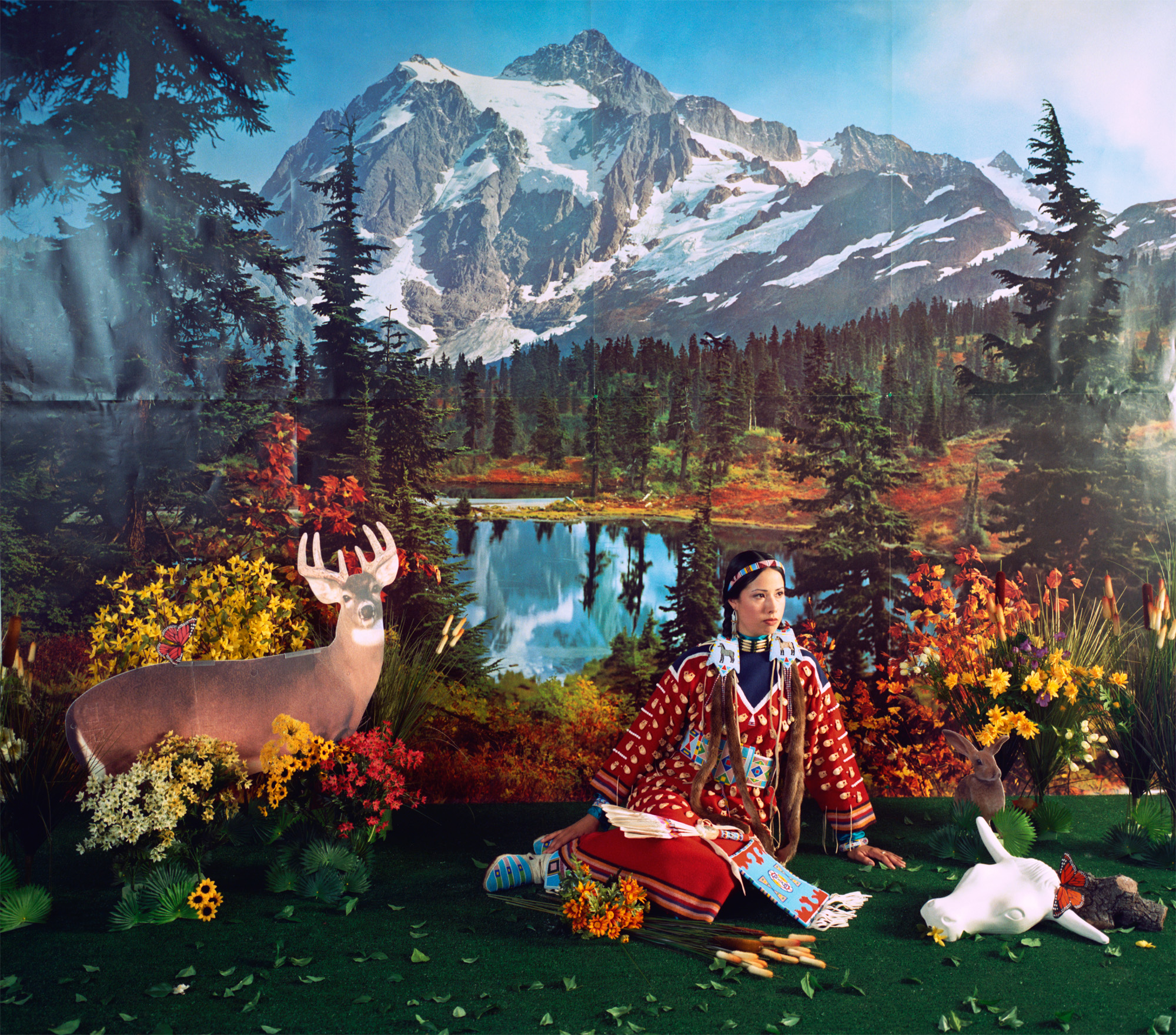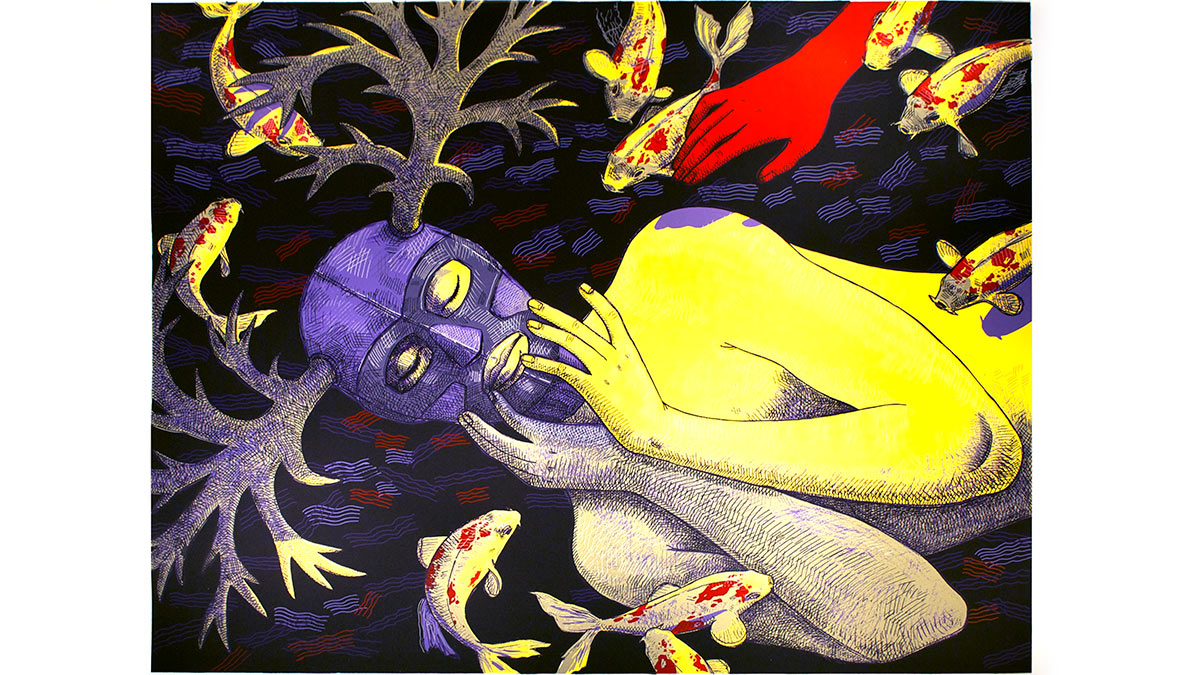Artist Spotlight
Self-Portraiture in the work of Wendy Red Star and Joe Fedderson
By Tyler Noland, SOU ’21
In an age in which self-portraiture is everywhere, contemporary art is tasked with taking on the vitality of an artist’s self-reflection. Featured in the Winter Exhibition are two Northwest Indigenous artists, Wendy Red Star and Joe Feddersen, who despite their generational gap both began their careers exploring self-portraiture. Many people’s first thought when they hear Indigenous artwork is to think of traditional baskets and weaving, a mistake that contemporary artists like Feddersen and Red Star have been setting straight from the beginning of their careers. These two artists demonstrate the dynamic nature of identity in all aspects of their work. Evidently, their self-portraits are a prime example of this.
Joe Feddersen’s self-portrait, Surface Self Portrait, is on display in the Schneider’s Main Gallery. This is a multimedia work featuring a photo of Feddersen, push pins, staples, and various patterns. He placed himself as an Indigenous artist among modern artistic techniques such as the use of office supplies. This is in contrast to the patterns on the rest of the work that remind the viewer of something traditional, but which have clearly been updated. Made in 1988, this is the oldest piece of Feddersen’s work on display in this exhibition.

Wendy Red Star’s Four Seasons series is her best known work. These photographs feature her in front of various artificial backdrops she created to emulate that of a natural history museum. Her artistic approach to this series, contrasts her identity to the historic and popular perceptions of what it means to be Indigenous. She combats this general prejudice by using herself as the subject in the midst of astro turf and fake seventies living room murals. Wendy has two more self-portraits in the exhibition, both of which also feature her daughter. Using the self-portrait format, she has updated what it looks like to be a modern Indigenous woman and artist. Many of her images correct the historic representations of her ancestors photographed by Edward Curtis.
Both Feddersen and Red Star show the world that Indigenous artwork is contemporary, relevant, and stunning. They used their own image to combat the perceptions of their identities. In a society in which many people take pictures of themselves on a near daily basis, self-documentation has become both commonplace and highly artistic. The self-portraits in the Winter Exhibition demonstrate the power in being both the artist and the subject of your own thoughtful work.
The Winter Exhibition Two Generations: Joe Feddersen & Wendy Red Star will be on display in the Schneider Museum of Art in Ashland, OR until March 14th, 2020.
Tyler Noland is a junior Creative Writing major at Southern Oregon University. She is originally from the Bay Area, and this is her second year at the Schneider Museum of Art. While not working on her writing she enjoys thrifting for her newest funky outfit.
